Note from Rachel DeMille: I put this out last year, and thought it might be of use to some of our newer subscribers – or perhaps for a second read to those who’ve already seen it. Take note of the new, expanded and totally awesome list of science resources!!
Featured Article:
Back-to-School Shopping List, Part I
Content overview:
- Mentor Advisory: You’re the expert!
- To borrow or to buy?
- Old-fashioned vs. New-fangled
- Top Picks
- The classics are great for literature. But what about Math & Science?
1. MENTOR ADVISORY: Whenever you encounter a talented expert giving you step-by-step recommendations, you might sometimes find that there is more “guidance” than you need or should use.
Please utilize these recommended resources (and any other systems, lesson plans or resources you find anywhere) with care!
- Do customize their content and processes so that they serve your needs.
- Don’t find yourself in a situation where you and your students are marching to the orders of a book or “expert”.
If you keep the 7 Keys of Great Teaching in mind, you will find yourself picking and choosing, personalizing and passing things up, as you respect yourself as the master teacher that you are becoming, and address the individual needs of your students.
Remember: You’re the expert.
And above all: Inspire!
2. To Borrow or to Buy?
The question inevitably arises regarding which resources you should purchase, and which are best to borrow from a library or friend. The answer will differ, depending on your budget, storage space, the number of kids you have (think in terms of handing resources down), where you live, etc.
In general, there are a few classics that I like to have on hand at all times for referring to or for the kids to be able to pick up at will.
Sometimes the best books can feel like an “assignment” rather than an exploration when there is a due date when you have to return it attached to it. And most of our best moments (especially in the younger years) occur in spontaneous moments of discovery when we find ourselves returning to a book that’s waiting for us on a shelf.
Most of the books I have recommended below are on my “must own” list, but if space and/or budget issues have you watching carefully what you bring in to your home “for keeps”, it’s a good idea for you to borrow them first and experience them for several weeks.
If you live in a rural area like we do, you might want to consider signing up for Amazon Prime shipping. This gives you free shipping to your location, and the cost for return shipping if the product doesn’t suit you is cheaper than gas to any bookstore that might carry the item — and for most of what I shop for, normal bookstores don’t carry it anyway, so it makes even more sense! Gas prices now have me shopping on Amazon first for almost everything.
There are other benefits, like streaming movies, etc., which sweeten the deal a little. There are some classic movies and series available on their list, and it’s always expanding. For as much as our family shops for educational resources, this is one investment that pays for itself over and over again. I even buy some household and medical supplies with free shipping. Just take a moment to calculate your gas expenditures when shopping, and extend that over a year’s time to get an idea whether Amazon Prime might save you money [Full disclosure: Just in case you were wondering by now, I do get an affiliate compensation for recommending Amazon Prime. But I’m a long-term subscriber to the service and really do love it!]
I would also be remiss if I did not mention that, other than the types of things I have listed in the “Top Picks” below, 90% of my school stuff comes from yard sales, thrift stores and the like. You can get amazing things!! Recent finds include:
- A folk guitar, excellent condition but for one broken string: $5
- A weight/number line system (like I used in grade school!): $2
- Art supplies galore (sketch pads, paints, brushes, colored pencils, full apple box of stencils, full apple box of scrapbooking pages, etc., etc.) @$15
- Magazine organizers (great for keeping each kid’s shelf tidy): a full apple box for $2
- Discovery Toys Writing game: $.50
- Little Tikes hutch for expanding the younger kids’ shelves (a perfect match for their existing shelf!): $10
- Expanding alpha-tabbed file for keeping printables organized: free
When you keep your eyes open and a small budget available, you can say “yes” to a lot of opportunities. Just remember to do your 6-month purge or you can end up with an embarrassment of riches! Having your stuff well-organized helps you know when you have enough math games, or enough writing pads. Then you can be glad for the next person to come along and grab the deal you’re passing up, and you’re twice blessed!
3. Traditional or Cutting Edge?
More and more families are utilizing technology in their learning, and I’m finding that the newest generation of offerings has some great stuff for those who are so inclined. The old-fashioned way still works like a charm–and I’ve got some tried-and true suggestions here. The new-fashioned way will also appeal to many, and I’ve included some more tech-based suggestions as well.
Don’t try to make something work that’s not right for you and your goals. At the same time, let’s all celebrate that there are so many wonderful things for each of us to choose from. You might find that something that didn’t seem like it applied to you before could be just the right thing for now…
4. Some Top Picks:*
 This Week in History This TJEd-friendly online resource takes you on rabbit trails that cover everything from language skills to music, geography, anatomy, foreign language, cooking, science, math and more – in a way that includes all ages and levels of interest and aptitude. Ready-to-go and easily incorporated in any style. (See reviews at the end of this article)
This Week in History This TJEd-friendly online resource takes you on rabbit trails that cover everything from language skills to music, geography, anatomy, foreign language, cooking, science, math and more – in a way that includes all ages and levels of interest and aptitude. Ready-to-go and easily incorporated in any style. (See reviews at the end of this article)
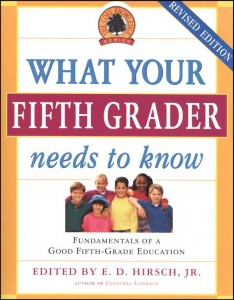 The Core Knowledge Series by E.D. Hirsch
The Core Knowledge Series by E.D. Hirsch
Get them one at a time if you must, but you’ll never be sorry to have this at your fingertips! I like to read with my kids and put the each one’s initials next to the content I’ve covered with them.
 The Story of the World Series by Susan Wise Bauer
The Story of the World Series by Susan Wise Bauer
These stories are about the best thing going for listening at bedtime or in the car. They straddle the line nicely between great storytelling and conveyance of lots of information. And they lead to wonderful discussions – so keep your finger poised to hit the “pause” button and take your time going through them!
- The History of US
 by Joy Hakim (for me, these are better for older Love of learning and Transition to Scholar/Scholar)
by Joy Hakim (for me, these are better for older Love of learning and Transition to Scholar/Scholar)
They have these at our library, and I’m not yet certain whether I want to own them, but I’m loving them at the moment. I read to the kids while their hands are busy — even while my 14yo daughter is doing math right beside us and the others are playing Memory. (Remember, some kids actually thrive on multiple activities at once; I do!)
- The Story of Science by Joy Hakim (I would stick to the main books, and not the student guides and teacher supplements)
Cool content I’m just now exploring, and really thrilled about! I love her style of writing. I do think it’s a book to either read with/to the kids, or for sure to discuss along the way, being familiar with what is presented, so that you can clarify how science, philosophy, history and religion developed together, and help your kids make sense of questions as they arise.
- The Life of Fred by Stanley Schmidt
- Stanley Schmidt is insanely brilliant in the way he presents his material. It reminds me of the way I teach Hebrew–but I would never have thought you could be so random, creative and abstract while teaching math! These are a little pricey and tough to find in a lending library, but they are absolutely built to last. I will be using these with multiple kids and keeping them around to use with my grandkids as well. Very happy with this purchase.
5. What about Math and Science?
The study of math has lost its soul in the past century. We have become so obsessed with our comparative lack of math proficiency that we have over-compensated on the side of learning skills without drawing meaning from the study of math. It was not always so: In ancient times math was strongly tied to music, philosophy and other “practical” pursuits.
The net result of this lack of vision is that today’s learners (and teachers!) are uninspired to explore math; they believe they are no good at math, and ultimately, that math has nothing to do with anything they care about. Thank goodness for a surge of great resources, with an ever-expanding field, to help today’s learners with the elegance and titillation of mathematical study. We are relearning the language of math in the 21st century!
Inspirational Math
For some homeschoolers, teaching math and science is the greatest worry. As TJEders, those of us who aren’t math-inclined find this especially challenging: how do you “Inspire” when you don’t like math? How do you use “Classics”? And omigoodness, what of “You” in math studies? Must I really???
Never fear. As with everything else, your change of heart and new-found inspiration in math (suggestions to discover this new-found inspiration follow below…) will infuse your home and classroom with a dynamic and enthusiastic Love of Learning that leads to a successful Scholar-approach to mathematics.
Math Resources On TJEd.org:
- Math fun on TJEd.org >>
- List of Math Classics for Adults (pdf download with live links available here)
- List of Math Classics for Kids (pdf download with live links available here)
- “Living Math”
- “What’s Math Got To Do With It?”
Must-reads for parents struggling to teach math
(I recommend you read them in the order they appear here)
1. Math Doesn’t Suck by Danica McKellar
 Not only does this popular actress/professional mathematician help you brush up on your skills, but her teaching style will help you get a feel for how to innovate on math principles, and how to use teach them in fun and relevant ways. Easily incorporated into anyone’s style. My kids love these!
Not only does this popular actress/professional mathematician help you brush up on your skills, but her teaching style will help you get a feel for how to innovate on math principles, and how to use teach them in fun and relevant ways. Easily incorporated into anyone’s style. My kids love these!
I especially like that her teaching style promotes mathematical thinking. Too often kids (and even teachers) who seem to be successful in getting the right answers to equations don’t really grasp why it is how it is. They go through the motions without being moved by the bigger picture of how it relates to the wide world of knowledge! They deceptively excel at testing without ever becoming fluent the language of math.
This book coaches you on how to bring the principles into real-life focus, and does so in an entertaining and empowering way. There are two follow-up books in this series that are also worth your time if this book hits the sweet spot for you: Kiss My Math: Showing Pre-Algebra Who’s Boss, and Hot X: Algebra Exposed. (Don’t let the titles fool you; they’re the sassiest thing about these books, which are really quite sweet.)
2. The Secrets of Mental Math by Arthur Benjamin
 I used this as a text for a class I taught, and some of the students who had previously been “math challenged” spent hours enthusiastically teaching and sharing their new-found genius in things mathematical!
I used this as a text for a class I taught, and some of the students who had previously been “math challenged” spent hours enthusiastically teaching and sharing their new-found genius in things mathematical!
Off-beat and inspiring, this one can not only empower the math-enabled parent or kid to new levels of prowess, but can reveal the undiscovered brilliance in students and parents who’ve missed the math boat in previous attempts. Highly recommended!
3. The Mathematical Universe by William Dunham
 Unique in its approach; this book takes random concepts, events and personalities in the realm of mathematics and presents them according to alphabetical order. This seemingly chaotic treatment actually ends up being both accessible to the math-insecure and elevating to the math lover.
Unique in its approach; this book takes random concepts, events and personalities in the realm of mathematics and presents them according to alphabetical order. This seemingly chaotic treatment actually ends up being both accessible to the math-insecure and elevating to the math lover.
Elegant and eclectic, this book led me to many moments of pondering on mathematical concepts, which I had not been prone to do previously. Much inspiration comes from reading this book slowly and considering how to share what you’ve learned with others!
4. The Beginner’s Guide to Constructing the Universe by Michael Schneider
 I haven’t actually started this one yet; it’s next on my docket. But Oliver tells me it’s indispensable on this list, and I have to say that merely reading the subtitle makes me feel a little giddy: “The Mathematical Archetypes of Nature, Art and Science – A Voyage from 1 to 10”.
I haven’t actually started this one yet; it’s next on my docket. But Oliver tells me it’s indispensable on this list, and I have to say that merely reading the subtitle makes me feel a little giddy: “The Mathematical Archetypes of Nature, Art and Science – A Voyage from 1 to 10”.
I LOVE, LOVE, LOVE writers who are able to connect things from one discipline or area of study to another. This is what we too often missed in conveyor belt learning, and the thing that helps us achieve brilliance as we get off the conveyor belt. I can’t wait to read it and be mentored by this mind!
5. Cliffs StudySolver Basic Math & Pre-Algebra
 This is my go-to book to fill in gaps (whether for the teacher or the student) in basic math skills and operations. It is organized in a very logical, sequential and simple fashion, and includes a pre-test that helps you pinpoint the exact concepts to cover to round out your basic math knowledge. AND!!! It only costs a few dollars on Amazon or AbeBooks. Beat that with a math rod.
This is my go-to book to fill in gaps (whether for the teacher or the student) in basic math skills and operations. It is organized in a very logical, sequential and simple fashion, and includes a pre-test that helps you pinpoint the exact concepts to cover to round out your basic math knowledge. AND!!! It only costs a few dollars on Amazon or AbeBooks. Beat that with a math rod.
This is the one I like to teach older students from who know their basic math facts but don’t seem to progress (or feel that they can’t). (Use this in conjunction with Math Doesn’t Suck and Secrets of Mental Math)
Math Toys and Games
 Abacus
Abacus
Having abacus on hand is the ultimate in simplicity for teaching number and place values, carrying, borrowing, number grouping and basic (and even more advanced) operations.
 Number balance
Number balance
I love this toy because it helps to reveal number values, help with understanding of the number line, negative numbers, additive inverses, the associative principle of addition, the relationship between factors and products, etc.
Sooo many great games and learning activities are facilitated by a nice set of dominos! Number grouping, equivalents, less/greater than, simple quantity recognition, etc. Plus, who doesn’t like a good game of chicken foot?
 Tangrams are a learning tool that combines artistic and mathematical elements to enhance visual perception ability, develop problem solving skills, creative thinking capacity and teamwork. The classic tangram forms a square. The 7 pieces can also form an infinite number of abstract designs, human figures, animals and everyday objects. The object is to form the image on the card using all seven puzzle pieces.
Tangrams are a learning tool that combines artistic and mathematical elements to enhance visual perception ability, develop problem solving skills, creative thinking capacity and teamwork. The classic tangram forms a square. The 7 pieces can also form an infinite number of abstract designs, human figures, animals and everyday objects. The object is to form the image on the card using all seven puzzle pieces.
 I like this Go Fish game especially because it has such broad appeal and utility. Our preschooler learns her numerals/quantities, our Core Phaser practices letter and word recognition and our Love of Learner/Young Scholar kids enjoy the little factoids about each fish that are on the cards. They can all play together and glean different things, while having a pleasant medium to help the younger ones with the skills they’re most interested in working on right now. Plus everyone loved the exotic and beautiful illustrations on the cards.
I like this Go Fish game especially because it has such broad appeal and utility. Our preschooler learns her numerals/quantities, our Core Phaser practices letter and word recognition and our Love of Learner/Young Scholar kids enjoy the little factoids about each fish that are on the cards. They can all play together and glean different things, while having a pleasant medium to help the younger ones with the skills they’re most interested in working on right now. Plus everyone loved the exotic and beautiful illustrations on the cards.
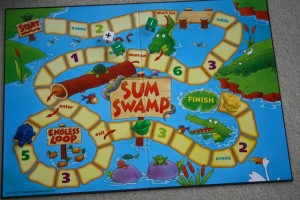 I’m recommending this one because so many of my friends have enjoyed it, although we don’t actually own it. It’s highly rated on amazon, as well. It’s a simple addition/subtraction game for very young players.
I’m recommending this one because so many of my friends have enjoyed it, although we don’t actually own it. It’s highly rated on amazon, as well. It’s a simple addition/subtraction game for very young players.
For older kids, try these:
Monopoly
Masterpiece
Pricey, but something of an investment in your kids’ future. Teaches principles of revenue, overhead, risk, loss and investment to “get out of the Rat Race”. We LOVE this game. (Even as I write this my kids are asking to play it…)
Like Scrabble, but you create equations instead of words…
One TJEd mom, Jen Beall (who has several higher degrees in science), sent me a list of science resources that are TJEd-friendly. Some of them I knew and used already; a LOT of them were new to me, and I’m really excited to share them with you. Many of these are DVD or online video; science is so experiential that just reading about it sometimes doesn’t fully achieve the magic. You sort of need to see and do, you know?
Anyway, here now is that list:
- The Magic Tree House series (and the non-fiction companion volumes)
- The Magic School Bus series (The link there takes you to the “Human Body” set, which includes a life-size poster and stickers. And it’s just plain amazing to go into a beehive with the Frizz and the kids!! These products are really cost-effective and SOOO worth the time invested. Lots of details, so they bear returning to again and again; classic!)
- The Fantastic Voyage, I & II, Asimov (great for learning anatomy)
- George’s Secret Key to the Universe & George’s Cosmic Treasure Hunt (by Stephen Hawking and his daughter; also available on audio book – great, not-dumbed-down intros to the universe)
- Theory of Everything video by Stephen Hawking
- Popular Mechanics for Kids video series
- How Stuff Works
- The University of Nottingham has a series of videos on each element in the periodic table!!
- Insect Lore (order insect larvae for metamorphological observations. That means to see what’s inside.)
- Giant Microbes (order stuffed “animal” microbes. You can toss them around and “catch” polio or strep. Ew. Cool!)
Here is what Jen had to say to me, and I thought it worth sharing:
Our science program is pretty basic right now. We read, we have a microscope and telescope, some magnifying glasses, pipettes and beakers, and I have just put up some posters in the bathroom detailing the brain, teeth, and ulcers (gross, but it was on sale!). We also have some big, heavy encyclopedias of Mammals, Ocean Life, Birds, and Dinosaurs that the bookstore was selling by the cash register for $7.99 apiece. We are into anatomy right now, so we have girl and boy 5-layer puzzles by beleduc.
Also, I don’t know where I got these, but I really like Janice Van Cleave’s stuff:
TTFN
I have lots more I want to download to you, but if I don’t get this out it will be a waste, as you will have already bought your resources for the season. Got to get back to “doing school” this morning.
xoxo rd
*More full disclosure: Amazon pays TJEd a portion of their profits when you purchase on their site after being redirected there from any of these book links. There is no change in your cost, but TJEd benefits! Thanks ever so much for your support.






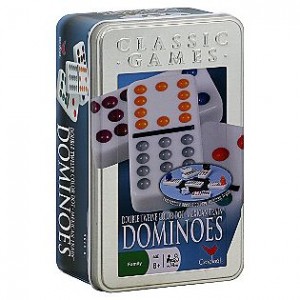

















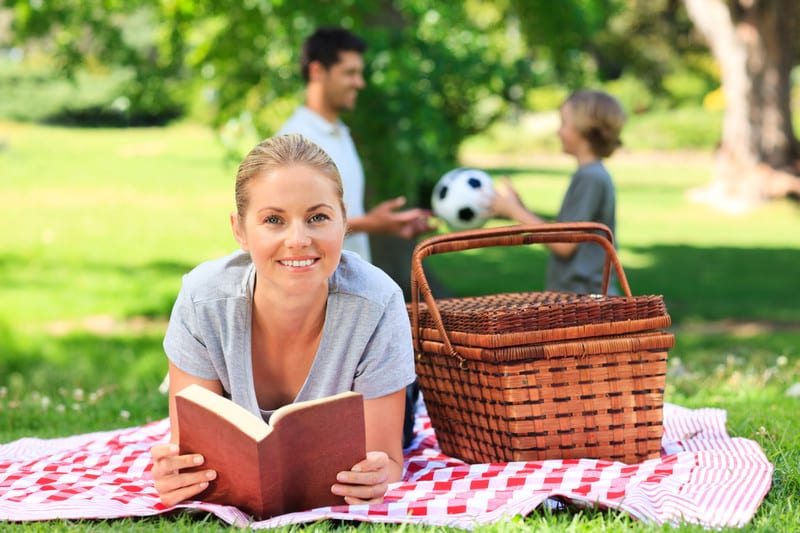




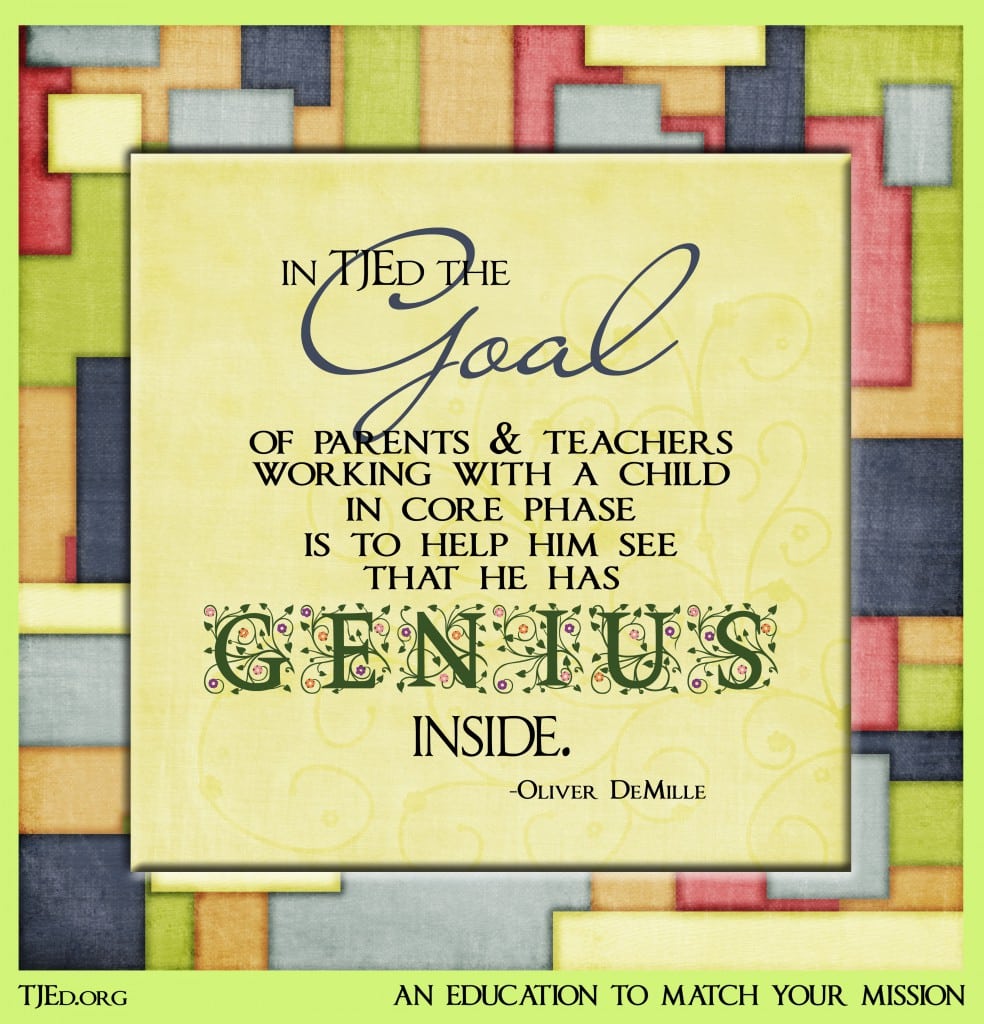



Leave A Comment